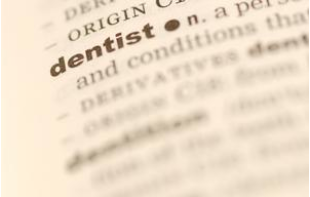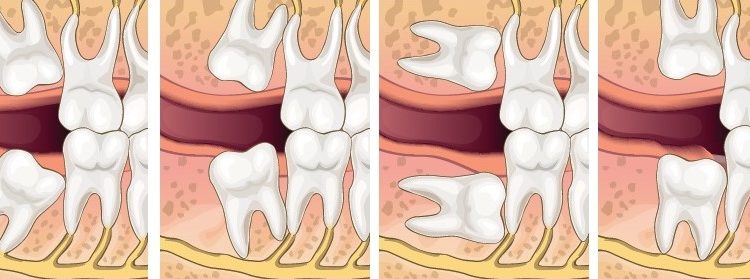Here are five dental terms that you might have heard before, but didn’t really know what they mean or why they are important.
Impacted Tooth: When a tooth is unable to fully enter the mouth it is said to be “impacted”. In general, an impacted tooth is prevented from breaking through the gums either by tissue, bone, or another tooth – that is to say, there is not enough room. The teeth that most commonly become impacted are the third molars, also called wisdom teeth. An impacted tooth can cause other dental problems, including infection of the gums, displacement of other teeth, or decay. At least one wisdom tooth becomes impacted in nine of every ten people.
Bruxism: Bruxism is the technical term for grinding and clenching of the teeth that may cause facial pain. People who grind and clench their teeth (bruxers), unintentionally bite down too hard at inappropriate times, such as in their sleep. In addition to grinding teeth, bruxers also may bite their fingernails, pencils and chew the inside of their cheek. People usually aren’t diagnosed with bruxism until it is too late, as many people don’t realize they have the habit. Others mistakenly believe that their teeth must touch at all times. About one in three people suffer from bruxism.
Temporomandibular Joint Disorder (TMD): TMD describes a variety of conditions that affect jaw muscles, temporomandibular joints (TMJ), and nerves associated with chronic facial pain. Symptoms may occur on one or both sides of the face, head or jaw, or develop after an injury. The condition can cause facial pain, restricted ability to open or move the jaw, and often causes a clicking/popping when the jaw is opened or closed. TMD affects more than twice as many women than men.
Malocclusion: Occlusion refers to the alignment of teeth and the way that the upper and lower teeth fit together (bite). Malocclusion is a misalignment of teeth. Malocclusion is common, and while it is not usually serious enough to require treatment, those who have more severe malocclusions may require orthodontic and sometimes surgical treatment (orthognathic surgery) to correct the problem. Malocclusions may be coupled with skeletal disharmony of the face, where the relationship between the upper and lower jaws are not appropriate. Such skeletal disharmonies often distort the person’s face shape, and severely affect the aesthetics of the face. This may be coupled with difficulty chewing and speech problems. Most skeletal malocclusions can only be treated by orthognathic surgery.
Oral and Maxillofacial Surgeon: a dental surgeon who cares for patients with problem wisdom teeth, facial pain, and misaligned jaws. They treat accident victims suffering facial injuries, place dental implants, care for patients with oral cancer, tumors and cysts of the jaws, and perform facial cosmetic surgery. Their advanced training in anesthesia allows them to provide quality care with maximum patient comfort and safety in the office setting.
We hope this will help you better understand some of the dental terms the profession uses and why they’re important. We at McGann Facial Design believe that knowledge is power. Check our future posts for more dental terms and to learn more about your mouth. If you have any questions, concerns, or suffer from issues with your teeth or jaw, call or email us today!
To learn more about McGann Facial Design and what we do, click here: http://mcgannfacialdesign.com/procedures/





